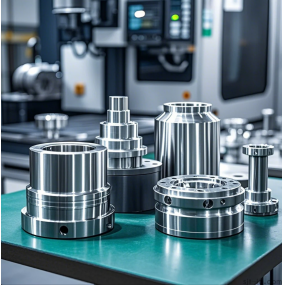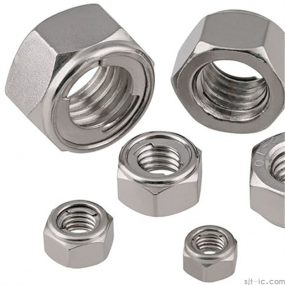The difference between precision stamping processing and stamping processing is that fine stamping can be called a forming, to minimize the processing after stamping. The stamping process is the production process of product parts with a certain shape, size and performance. It makes the metal sheet directly subject to deformation force in the mold, and deforms with the help of conventional or stamping equipment. The fine stamping parts processed by the fine stamping process have the advantages of large size range, complex shape and high precision, and are widely used in automotive, medical, aviation and other industries. In order to ensure the forming effect of stamping parts, the following matters need to be paid attention to when precision stamping parts:
1. The number of precision stamping parts mainly depends on the complexity of its structure and shape, depending on the number of bending angles, relative position and bending direction. When the bending radius of the curved part is less than the allowable value, a forming process is added after bending.
2. The process quantity is related to the data nature, drawing height, drawing step number, drawing diameter, data thickness and other conditions, and can only be determined by drawing process calculation. When the fillet radius of the drawing part is small or the dimensional accuracy is high, the forming process should be added after drawing; 
3. The number of processes should be consistent with the existing mold manufacturing capacity and stamping equipment of the enterprise. The mold manufacturing capacity should be able to ensure the corresponding schedule requirements for mold processing and assembly accuracy. Otherwise, the number of operations can only be increased;
4. When the cross-sectional quality and dimensional accuracy of the fine blanking parts are high, the finishing process can be added after the blanking process or the fine blanking process can be directly adopted.
5. In order to improve the stability of the precision stamping process, it is sometimes necessary to increase the number of steps to ensure the quality of the precision stamping parts. For example, additional positioning holes for bending parts are punched, and the amount of deformation is increased during the forming process to reduce the hole punching to transfer the deformation area.
6. Fine blanking with simple shape is completed by single-process die. Due to the limitation of die structure or strength, the inner and outer contours of the workpiece with complex shape should be divided into multiple parts for blanking, and a variety of stamping processes should be used;
7. Special stamping oil should be used for precision stamping processing. Non-special oils such as rapeseed oil, motor oil, and recycled oil do not contain additives suitable for stamping processing, which can cause quality problems such as reduced workpiece accuracy, rough edges, and surface damage. Chemicals in non-special oils can form rust, macula, dark spots, etc., and skin allergies.
This article is from EMAR Mold Co., Ltd. For more EMAR related information, please click: www.sjt-ic.com,


 Spanish
Spanish Arabic
Arabic French
French Portuguese
Portuguese Belarusian
Belarusian Japanese
Japanese Russian
Russian Malay
Malay Icelandic
Icelandic Bulgarian
Bulgarian Azerbaijani
Azerbaijani Estonian
Estonian Irish
Irish Polish
Polish Persian
Persian Boolean
Boolean Danish
Danish German
German Filipino
Filipino Finnish
Finnish Korean
Korean Dutch
Dutch Galician
Galician Catalan
Catalan Czech
Czech Croatian
Croatian Latin
Latin Latvian
Latvian Romanian
Romanian Maltese
Maltese Macedonian
Macedonian Norwegian
Norwegian Swedish
Swedish Serbian
Serbian Slovak
Slovak Slovenian
Slovenian Swahili
Swahili Thai
Thai Turkish
Turkish Welsh
Welsh Urdu
Urdu Ukrainian
Ukrainian Greek
Greek Hungarian
Hungarian Italian
Italian Yiddish
Yiddish Indonesian
Indonesian Vietnamese
Vietnamese Haitian Creole
Haitian Creole Spanish Basque
Spanish Basque











